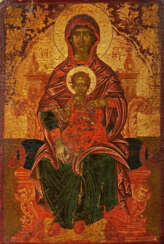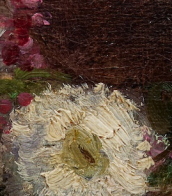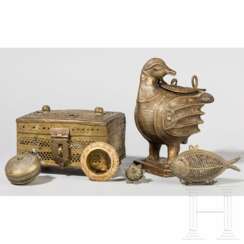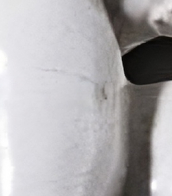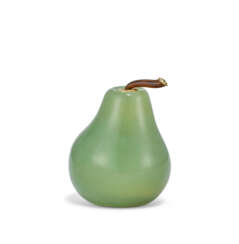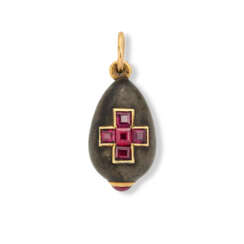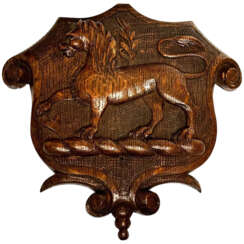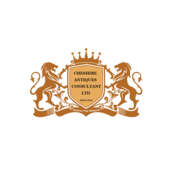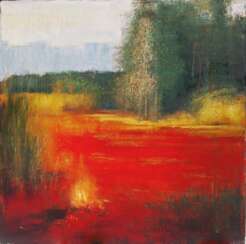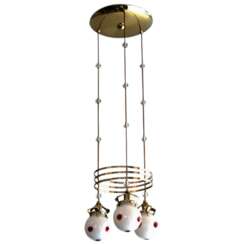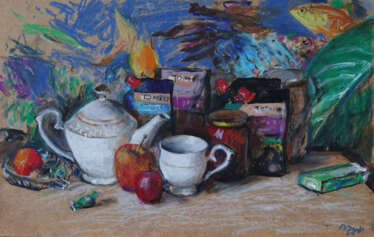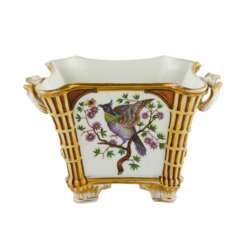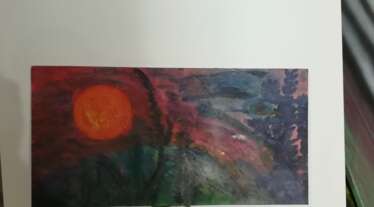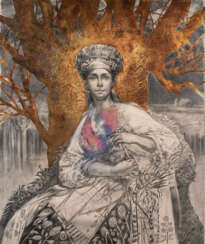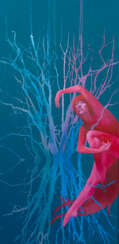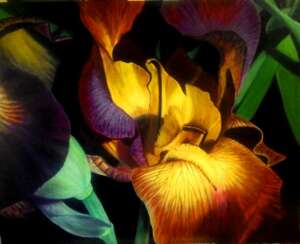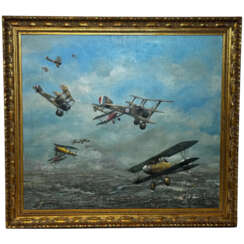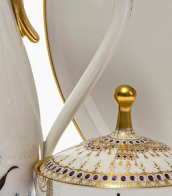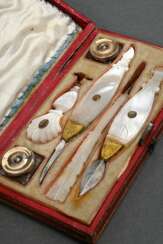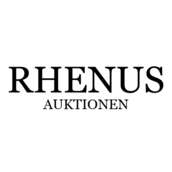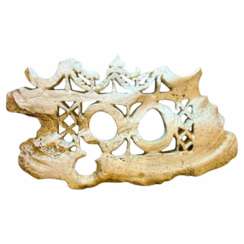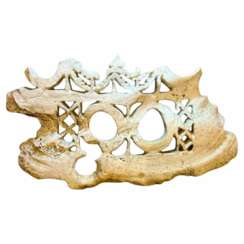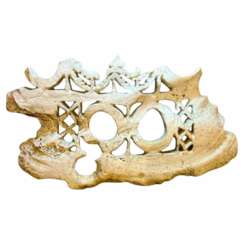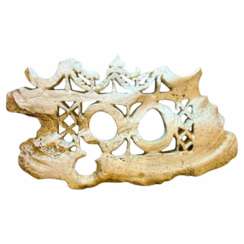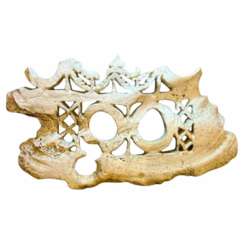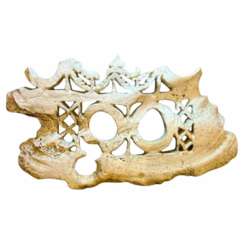371 Items by auctions and galleries:
other objects
Lot 11 A JEWELLED TWO-COLOUR GOLD-MOUNTED MOTHER OF PEARL AND GUILLOCHÉ ENAMEL FAN
The Winter Egg and Important Works by Fabergé from a Princely Collection 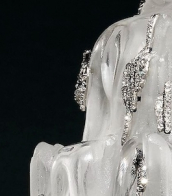

CHRISTIE'S
The Winter Egg and Important Works by Fabergé from a Princely Collection
Date: 02.12.2025 17:00 UTC +00:00
Number of lots in the catalog: 47
Фарфор, роспись. Германия, Гоебель,
Tatjana Jansberga (b. 1967) 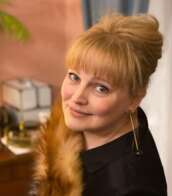 Shop Jansberga Tatjana
Shop Jansberga Tatjana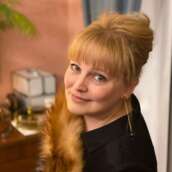

Tatjana Jansberga
18.11.1967
Germany
Здравствуйте! В 2003 году, по семейным обстоятельствам, переехала из Риги (Латвия) в Дюссельдорф. Пишу картины на заказ, этим и зарабатываю. Работы находятся в частных собраниях Латвии, Германии, ЮАР
Участвовала на Ярмарке искусств «ArtExpoSPb 2015» Санкт-Петербург.
Участвовала на Ярмарке искусств "Hildener Künstlermarkt" Хилден, Германия, 2016.
Участвовала в выставке "Italian Style" PALAZZO VERSACE, DUBAI 2016.
Участвовала на Ярмарке искусств c "Hildener Künstlermarkt" Хилден, Германия, 2018.

Artist shop
Jansberga Tatjana
Germany
Number of products: 19
Picnic by the Roadside
Nataliia Bahatska (b. 1967) 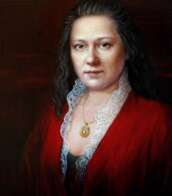 Shop Bahatska Nataliia
Shop Bahatska Nataliia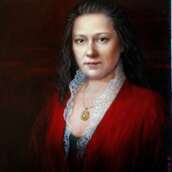

Nataliia Bahatska
20.10.1967
Ukraine
I was born in 1967.
Graduated childrens art school.
Graduated from Kyiv National University of Design, designer in 1993.
Academy of Psychosocial Technologies in 2008
The artworks are in Ukraine, Lithuania, Kazakhstan, Russia, Germany, Sweden, Switzerland, Italy, France, UK, USA, Vietnam, Canada, Netherlands.
Recently, all paintings have been created in hyperrealism and pop art.
Exhibition "Pro Cheese", ArtHall "D12", Kiev, 2021.
IV Ukrainian Festival of Contemporary Women's Art at the Institute of Contemporary Art of the National Academy of Arts of Ukraine, Kyiv, Ukraine, 2021
International exhibition "# 365daysafter" in the gallery "Artist", Kyiv, 2021. Exhibition "HRYVNA ART" in the Palace of Arts, Lviv, 2021.
Exhibition "HRYVNA ART" in the Museum of History of Kyiv, Kyiv, 2021.
Exhibition "HRYVNA ART" in the Ministry of Finance of Ukraine, Kyiv, 2021.
Exhibition at the Sky Mall, Kiev. 2021
Competition Pro Cheese Awards, Kiev, Parkovy Exhibition and Convention Center. Grand Prix. 2021
Exhibition "Барви світу" in Parlament of Ukraine. Kyiv. Ukraine, 2019
Sheldon Rose Gallery, "Big Ideas in Small Art", Toronto, Canada, 2019
Group exhibition from Ukraine at 58 Venice Biennale, "Falling shadow Dreams over gardens Giardini ". Italy, 2019
Exhibition "Vizionario" in la galleria Merlino Bottega d'arte di Firenze. Italy, 2019
Exhibition in ABC-art gallery. Kyiv, 2019
1st All-Ukrainian Triennale "NU-ART", Kremenchuk, 2018
"Ukraine from Trypillya to the present in the images of contemporary artists" - Biennial. National Union of Artists of Ukraine (NUAU), Kyiv, 2018
"Picturesque Ukraine", NUAU,the city of Severodonetsk, 2017.
Biennale of abstract Painting,NUAU, Kyiv, 2017
Until the Day of the Artist, NUAU, Kyiv, 2016, 2017, 2018.
"Portrait Painting" , gallery "Mytets", Kyiv, 2017
"To the 160th anniversary of Ivan Franko",NUAU, Ivano-Frankivsk city, 2016
On Independence Day of Ukraine, NUAU, Kyiv, 2017, 2018,
When buying, please specify the payment and delivery methods.

Artist shop
Bahatska Nataliia
Ukraine
Number of products: 231
"Provincial still life"
Vladislav Zdor (b. 1994)  Shop Zdor Vladislav
Shop Zdor Vladislav
Vladislav Zdor
21.11.1994
Ukraine
Владислав Здор - украинский художник (1994 г. р.). Родился в Кривом Роге, в 2012 г. поступил в Крымское художественное училище, но в 2014 г. из-за аннексии Крыма Россией был вынужден уехать в Харьков. Закончил Харьковское художественное училище, Киевскую Академию Искусств. Работает преимущественно в стиле реализма, импрессионизма, экспрессионизма в таких жанрах как пейзаж, портрет, натюрморт, ню, военно-историческая картина. Использует различные техники: маслянная живопись, пастель, гуашь, тушь, уголь и др. Владислав находится в постоянном поиске художественных решений и приемов, концептуальных смыслов и идей, которые бы способствовали максимально точной передаче его мироощущения. Участник многих групповых всеукраинских выставок. Живет и работает в Киеве.
Artist shop
Zdor Vladislav
Ukraine
Number of products: 43
"Pink Еvening" (RedTwilight) (Sunset)
Alexandre Ab (b. 1976) 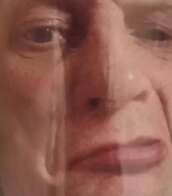 Shop Ab Alexandre
Shop Ab Alexandre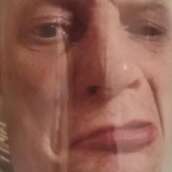

Alexandre Ab
23.10.1976
Switzerland
Александр, родился и вырос в России, окончив школу в 1998 году уехал в Европу, жил во Франции и учился в Университете прикладных наук Западной Швейцарии, после окончания работал в банковской системе Швейцарии. В 2011 году имел неосторожность разделить единицу на ноль в попытках создания нового образа банковских транзакций и этим получил философский дар атригуляции сущности вещей и фотонический кварк реализма бытия, что в итоге это вдохновило автора. Иногда автор видит модальности сущего и испытывает веселые галлюцинации они дают ему подсказки и помогают творить современное искусство.
Alexander, born and raised in Russia, after graduating from school in 1998, left for Europe, lived in France and studied at the University of Applied Sciences of Western Switzerland, after graduation he worked in the Swiss banking system. In 2011, he had the imprudence to divide one by zero in an attempt to create a new image of banking transactions and thus received the philosophical gift of atrigulating the essence of things and the photonic quark of the realism of being, which ultimately inspired the author. Sometimes the author sees the modalities of existence and experiences funny hallucinations, they give him hints and help him create contemporary art.

Artist shop
Ab Alexandre
Switzerland
Number of products: 37
Ольга
Oleksandra Fedoruk (b. 1989) 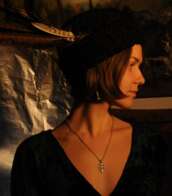 Shop Fedoruk Oleksandra
Shop Fedoruk Oleksandra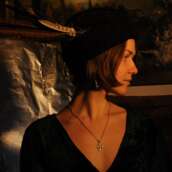

Oleksandra Fedoruk
03.01.1989
Ukraine
Меня зовут Александра Федорук. Живу и работаю в городе Киев. Детство и юношество прошло в городе Переяслав-хмельницком(город музеев). Это место с богатой историей, насыщенной красотой природы и спокойной атмосферой не могло не повлиять на моё творчество. Ещё с раннего возраста у меня появилась любовь к рисованию. С 7 до 18 лет я училась в художественной школе. После окончила Национальную Академию Искусств в городе Киеве, факультет реставрация живописи. Профиль реставрация я выбрала неслучайно, а потому что хотела не просто усовершенствовать навыки живописи, а понимать глубину техник, композиции, химические, физические свойства материалов, уметь анализировать и исследовать произведения искусства, их символику и загадки. На базе огромных знаний реставратора-художника я создаю свои картины. В моём понимании процесс сотворения творческого продукта, будь то картина или литературное произведение, не заканчивается процессом творения.
В данный момент я работаю реставратором монументальной живописи в Национальном заповеднике «София Киевская». Работаю и изучаю древние произведения искусства и архитектуры 11-19 века.
В процессе моего творческого развития меня вдохновляли разные мастера живописи, скульпторы, архитекторы, одними из которых были Феофан Грек, Блэк, Гоген, Бэкон, Михаил Врубель.
Моими учителями являлись мастера знаний художественных техник, материалов и выдающиеся реставраторы, но они не являлись художниками. Возможность изучать и огромное желание рисовать позволило мне расширить мои инструменты и сформировать индивидуальный способ выражения в виде графики, живописи, фото и скульптуры. Для создания произведений я использую разные материалы, применяю разные секреты., что и делает мои картины уникальными. На поиски подходящих материалов все только начинается. Значительную весомость картины приобретают благодаря наполненности символами, что гармонично сочетается с женскими и мужскими образами.

Artist shop
Fedoruk Oleksandra
Ukraine
Number of products: 12
Galapagos
Irina Greciuhina (b. 1982) 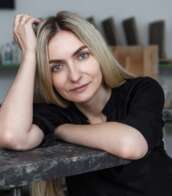 Shop Greciuhina Irina
Shop Greciuhina Irina

Irina Greciuhina
15.05.1982
Moldova
Ирина Гречухина (р. 1982) - художник, живущий и работающий в Кишиневе, Республика Молдова. Она изучала живопись в Академии музыки, театра и изящных искусств в Кишиневе, и продолжила обучение в Техническом университете Молдовы, получив степень в области архитектуры и градостроительства. С 2007 года она является руководителем архитектурно-дизайнерского бюро в Кишиневе. Работая над эксклюзивными национальными и международными проектами и получает награды в области дизайна и архитектуры.
На протяжении своей карьеры Ирина экспериментирует с разными стилями и техниками в искусстве, а с 2019 года активно выставляет свои работы и участвует в международных проектах. За короткое время Ирина успела поучаствовать в Международной биеннале живописи в Кишиневе, выставить свои работы в Италии, Испании, Румынии и Франции и даже провести свои первые персональные выставки.
Благодаря своим картинам и цифровым принтам Ирина противостоит стереотипным архетипам женщин, уравновешивая поп-арт позы и цвета с сюрреалистическим фоном и узорами дизайна. Ее влияние варьируется от японской графики до Тамары Лемпицкой и AES + F. Комбинируя несовместимые элементы, она озадачивает публику, предлагая создать собственный рассказ о сюжетах ее картин.
Ирина представлена художественными галереями Лос-Анджелеса (США), Ставангера (Норвегия) и Москвы (Россия).
Ее работы находятся в частных и корпоративных коллекциях Европы и Азии.

Artist shop
Greciuhina Irina
Moldova
Number of products: 24
eye
Elizaveta RAT (b. 2002) 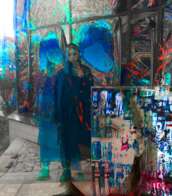 Shop RAT Elizaveta
Shop RAT Elizaveta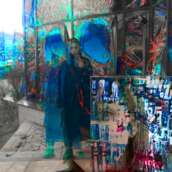

Elizaveta RAT
16.10.2002
Russia
Hello! I am a young artist from St. Petersburg
My creativity is, first of all, an expression of myself, my thoughts, feelings, my mental state.
I would like to convey to this world my vision of the world, feelings of love, anger, and immeasurable happiness to be here and now, with you!
I feel sincere joy and pleasure when my work finds a response in someone else's heart and mind, besides mine!
So if it's you - I will be grateful for your understanding
The main theme in my work, for me, is the eyes.
They are so attractively beautiful and inexplicably beckon me. Every time I write them, I try to convey at least part of the beauty that is in them.

Artist shop
RAT Elizaveta
Russia
Number of products: 10
Волнующие ирисы
Viktoriya Baranovich (b. 1975) 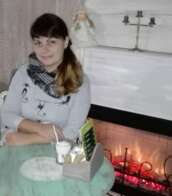 Shop Baranovich Viktoriya
Shop Baranovich Viktoriya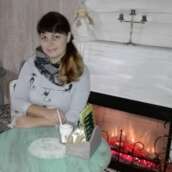

Viktoriya Baranovich
06.12.1975
Ukraine
Я живу и работаю в Украине, но по моему мнению творчество не имеет территориальных границ, поэтому я также планирую осваивать российский и зарубежный рынок. У меня нет специального художественного образования, но живопись - это не просто мое хобби, это то, чем я живу. Поэтому создаю каждую свою картину с трепетом и любовью. Мои работы смогут украсить любой интерьер, как в современном, так и в классическом стиле. Любимые жанры - портрет, реализм, а также импрессионистская пейзажная живопись. Пишу картины акрилом, владею техниками пастозной живописи, лессировки и работы мастихином.
I live and work in Ukraine, but in my opinion, creativity has no territorial boundaries. I have no special art education, but painting is not just my hobby, it is what I live by. Therefore, I create each of my paintings with trepidation and love. My works will decorate any interior, both in modern and classic style. Favorite genres - portrait, realism, as well as impressionist landscape painting. I paint with acrylics, I know the techniques of pasty painting, glazing and working with a palette knife.

Artist shop
Baranovich Viktoriya
Ukraine
Number of products: 3


